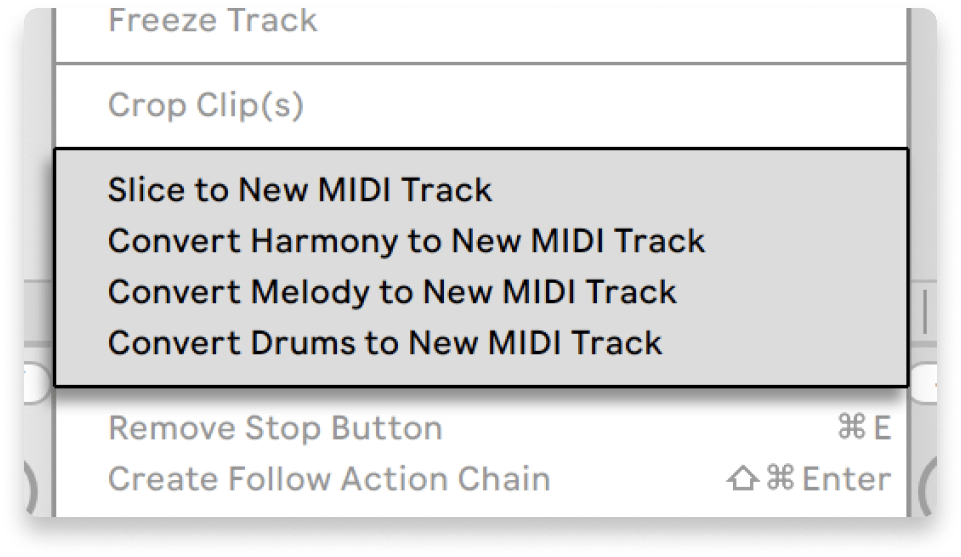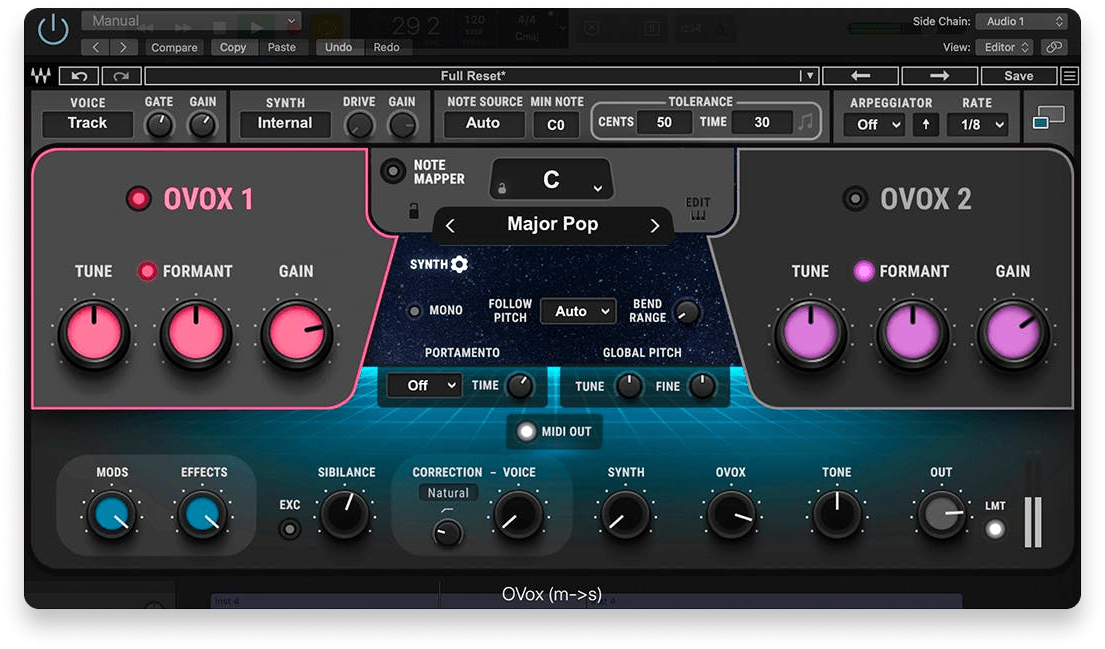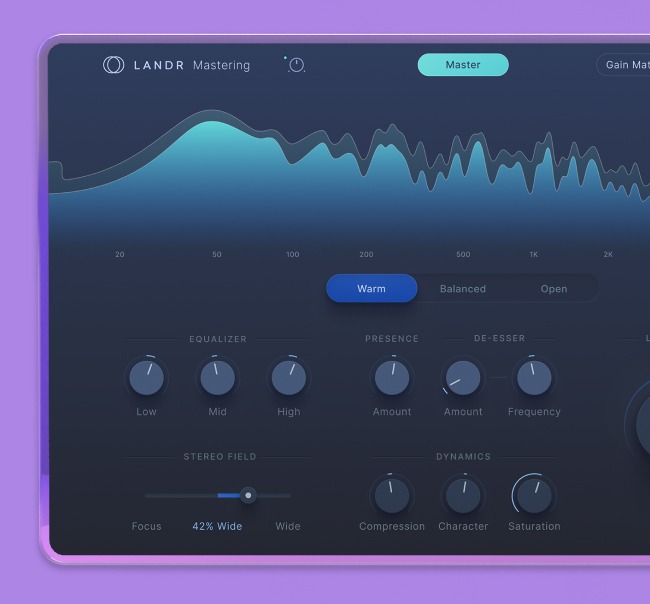
Audio to MIDI: The Best Tools for Turning Sound Into MIDI Control

Converting audio to MIDI can offer you some powerful possibilities when producing your music.
This list gathers some of the best audio to MIDI tools out there, with a variety of different use cases.
Let’s run through some background info and then take a look at the audio to MIDI tools you might want to check out.
How do you convert audio to MIDI?
There are several different ways to convert audio to MIDI, and they all have their own unique benefits in music production.
One is to use a dedicated plugin or standalone tool that will take audio data, detect pitch and/or other elements like timing and expression, and then translate that into MIDI data.
Other methods follow roughly the same principle, but are done using a feature built into your DAW. This can be pretty convenient if you don’t want to spend more money on a dedicated tool.
The most important thing to pay attention to is whether or not an audio-to-MIDI tool works in real time.
Real-time tools receive a live audio input and turn it into MIDI instantly, allowing you to “play” MIDI with whatever live audio input you’re using.
Audio-to-MIDI tools that are not real time, on the other hand, are typically used to transcribe audio data into MIDI data.
Why convert audio to MIDI?
Converting audio to MIDI can offer some pretty impressive creative potential.
Real-time tools like this allow you to control a wide range of virtual instruments with live input from your voice, percussion sounds, or a guitar.
Audio-to-MIDI tools that don’t work in real time typically allow you to extract MIDI data from existing audio to help boost your creative process and quickly provide you with inspiration.
We’ve build this list with a combination of both these types, and this is indicated in the overview of each tool.
So, without further ado, let’s explore the audio-to-MIDI tools you can to choose from out there and what you can do with them.
1. Ableton Live audio-to-MIDI

Overview
| Real Time: | No |
| Operating System: | Windows, macOS |
| Format: | Built-in feature |
| Cost: | N/A |
If you’re an Ableton Live user, you’ll be happy to know that there’s an excellent audio-to-MIDI feature built into the DAW.
When right-clicking on an audio clip in session view, you’ll see a few options in the context menu.
Convert Harmony to New MIDI Track will detect polyphonic note and chord information in the source audio and convert it into a MIDI clip.
Convert Melody to New MIDI Track will detect monophonic note information in the source audio and convert it into a MIDI clip.
Convert Drums to New MIDI Track will detect drum and percussion transients in the source audio and convert it into a MIDI clip.
The drums option also attempts to identify individual types of drum sounds separately (like kicks, snares, and hats) and provide you with a MIDI file that can trigger a drum kit accordingly.
As is always the case with audio to MIDI conversion, your results will be best with source audio that is high in quality and appropriate for the type of conversion you’re doing.
We recommend making sure that the transient markers in the clip you’re converting are reflective of the correct transients in the audio.
You can learn more about this feature in Live here.
2. Audio-to-MIDI in other DAWs

Overview
| Real Time: | No |
| Operating System: | Varies |
| Format: | Built-in feature |
| Cost: | N/A |
While Ableton Live is probably our favorite DAW for audio-to-MIDI conversion, it’s not the only one that has this capability.
If you own one of the DAWs below, you may have access to an audio-to-MIDI conversion feature that you weren’t aware of before.
Cubase can extract MIDI from audio using the VariAudio section of the DAW, but this can only be done with monophonic melodic sources. That means no chords or drums.
FL Studio’s built-in audio editor Edison has a feature to “Convert to score and dump to piano roll”, which will slice an audio sample by transient and convert notes to MIDI pitch data. This is also monophonic only.
Logic Pro allows you to create MIDI from audio using its Flex Pitch feature, though this also can only be done with monophonic melodic sources. The feature is explained here.
Reason allows you to create MIDI from one or more audio clips by selecting and right-clicking the clips and selecting Bounce > Bounce Audio Clips to MIDI. This is also monophonic only.
Still, considering Ableton Live’s flexibility between harmonies, melodies, and drum sounds, we feel it has the best built-in audio-to-MIDI feature out of all the DAWs available.
3. Celemony Melodyne

Overview
| Real Time: | No |
| Operating System: | Windows, macOS |
| Format: | Built-in feature |
| Cost: | $99-$849 |
Melodyne is one of the most well-known applications out there for editing pitch, expression, and dynamics in vocal and instrument recordings.
It can also be used for converting audio to MIDI data.
A key advantage of this is that you can fine-tune and correct Melodyne’s analysis of the pitches before exporting to MIDI.
Melodyne can convert both monophonic and polyphonic notes to MIDI data, and you can even do this with Melodyne Essential.
However, it’s worth noting that using Melodyne specifically for audio-to-MIDI conversion isn’t very cost effective.
It’s one of the more expensive pitch editing tools out there, so unless you happen to already own it, there are more affordable ways to accomplish this.
But if you do, we recommend learning about this feature here.
4. Vochlea Dubler

Overview
| Real Time: | Yes |
| Operating System: | Windows, macOS |
| Format: | Standalone |
| Cost: | $149 |
Now we’re shifting toward dedicated tools that are designed specifically for audio-to-MIDI processing.
Vochlea Dubler is a highly capable piece of software that turns a wide range of audio input signals into MIDI monophonic or polyphonic MIDI data.
It also has its own built-in instrument capabilities including synth and drum/sample sounds.
You can, for example, play a virtual instrument with your voice, play synth chords with chords from your guitar, or train it to accurately play a drum kit based on your beatboxing.
The MIDI data it outputs also includes expression data like velocity and pitch bend based on the qualities of the input.
Unfortunately, Vochlea does not offer a free trial for Dubler, but there is extensive video documentation of how it works and how it performs.
5. Waves OVox

Overview
| Real Time: | Yes |
| Operating System: | Windows, macOS |
| Format: | VST3, AU, AAX |
| Cost: | $149 |
This plugin from Waves is designed as a kind of hybrid between a vocal-to-MIDI tool and a vocal resynthesis engine.
In other words, it creates a synth-like vocal processing effect that tracks the pitch and dynamics of your voice, including polyphonic note triggering.
This makes interesting textures and harmonies possible, particularly since it has a dedicated effects chain section built in.
It can also output MIDI pitch data based on your voice in real time, but this feature is not supported in all DAWs.
You’ll have to consult this chart to see if MIDI output is supported for you.
Like their other plugins, Waves offers a free trial of OVox to see if it meets your needs before you want to buy.
6. Dodo MIDI

Overview
| Real Time: | Yes |
| Operating System: | Windows, macOS |
| Format: | VST3 |
| Cost: | Free |
Dodo MIDI allows you to play synthesizers and other melodic virtual instruments with your voice in real time.
It also happens to be one of our favorite free plugins.
We’ve found its pitch and portamento detection to be quite impressive, and in our use cases its latency has been imperceptible.
Since it’s designed for voice control and melodic instruments, it doesn’t detect chords and isn’t meant to produce MIDI for drum kits.
If its feature set and compatibility match up for you, we highly recommend trying it out.
7. NeuralNote

Overview
| Real Time: | Yes |
| Operating System: | Windows, macOS |
| Format: | VST3, AU, Standalone |
| Cost: | Free |
NeuralNote is a free polyphonic MIDI transcription tool built on an open-source deep learning model originally developed by a research team at Spotify.
While it technically does transcribe MIDI data from audio in real time, it’s not designed for real-time performance of virtual instruments.
Instead, it functions best as a very fast audio-to-MIDI converter for polyphonic tonal sound sources.
It also is not designed for triggering drum kits, so you won’t be able to use this one to turn your beatboxing into MIDI data for a drum kit.
We found that it performed quite well on our setup. It’s definitely worth downloading and testing out with your audio.
8. Jam Origin MIDI Guitar

Overview
| Real Time: | Yes |
| Operating System: | Windows, macOS, iOS |
| Format: | VST, AU, AUv3, standalone |
| Cost: | Varies |
With the right audio-to-MIDI tool, a guitar can become one of the most expressive and satisfying MIDI instruments out there. Jam Origin’s MIDI Guitar is designed specifically for this.
It’s an audio-to-MIDI plugin and standalone application that converts your guitar playing into fully polyphonic MIDI data in real time.
Not only does this allow you to play synths and other virtual instruments with your guitar, this tool also hosts other plugins, allowing you to build a “pedalboard” of effects.
It has an excellent reputation for its accuracy and usability, and the developer offers a free trial if you want to take it for a spin before buying.
9. beat bars A2M

Overview
| Real Time: | Yes |
| Operating System: | macOS, iOS |
| Format: | AU, AUv3, standalone |
| Cost: | $9.99 IAP |
Like Jam Origin’s MIDI Guitar, A2M is typically used for converting guitar signals into MIDI in real time.
Unlike MIDI Guitar, however, A2M handles monophonic pitch tracking only, so it won’t give you the same polyphonic playability. It also doesn’t track pitch bend information.
That said, it is designed to track both guitar and vocal signals, so you can use it to play virtual instruments with your voice.
It’s available free with in-app purchase, so you can try it out before you buy the full license for $9.99. Be sure to check the compatibility notes on the app’s webpage.
From audio to MIDI to inspiration
Whether you want to transcribe audio to MIDI files or you want to control any virtual instrument with your guitar or voice in real time, the possibilities with this kind of tool are pretty impressive.
Another powerful way to come up with excellent melodic and harmonic ideas quickly is with an assistive MIDI tool that helps you compose.
If you’re looking for something like this, we highly recommend checking out LANDR Composer.
Whichever tools you end up using, don’t sleep on the possibilities of MIDI. There are endless sources of inspiration to discover.
Gear guides, tips, tutorials, inspiration and more—delivered weekly.
Keep up with the LANDR Blog.













